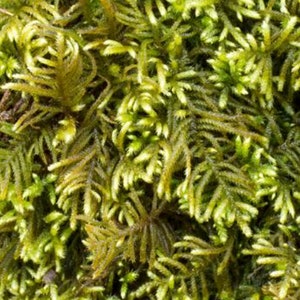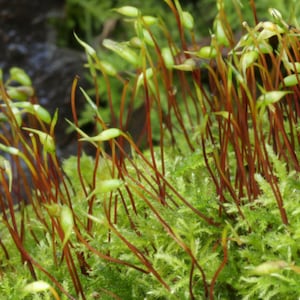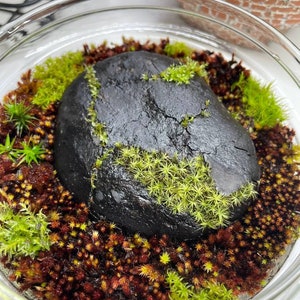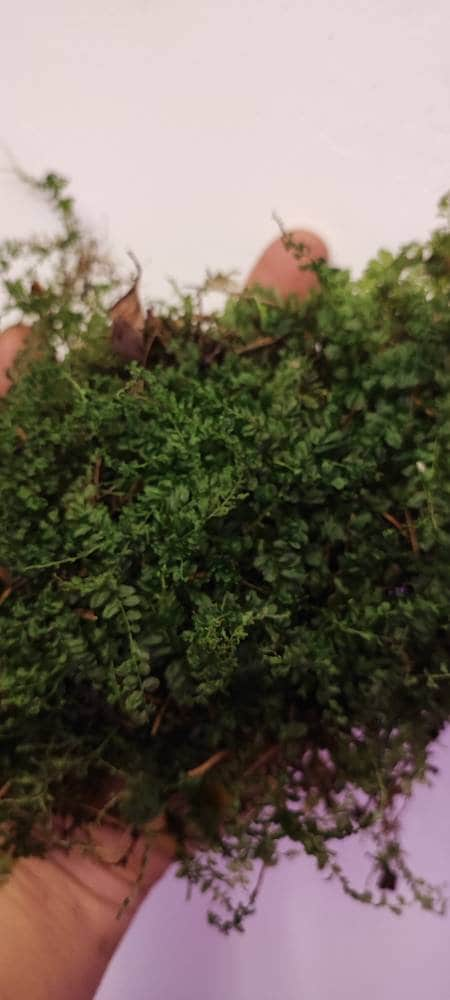
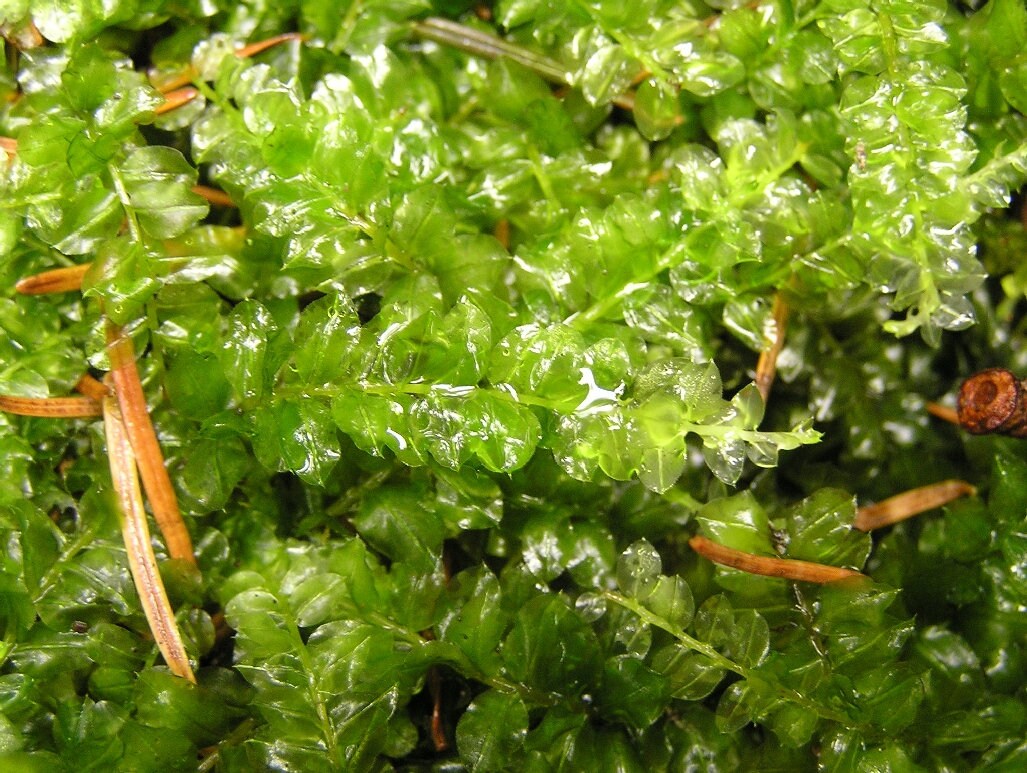

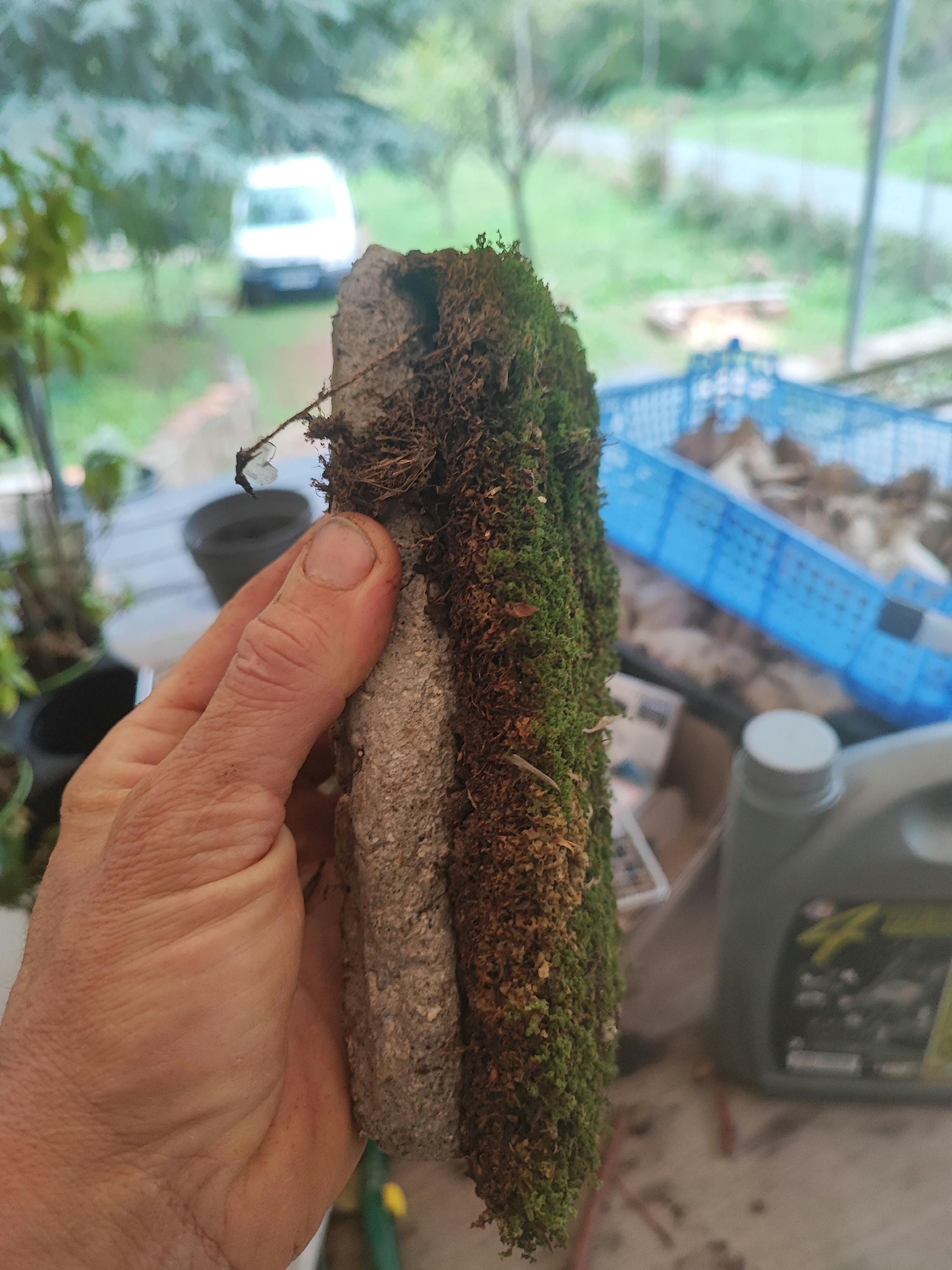
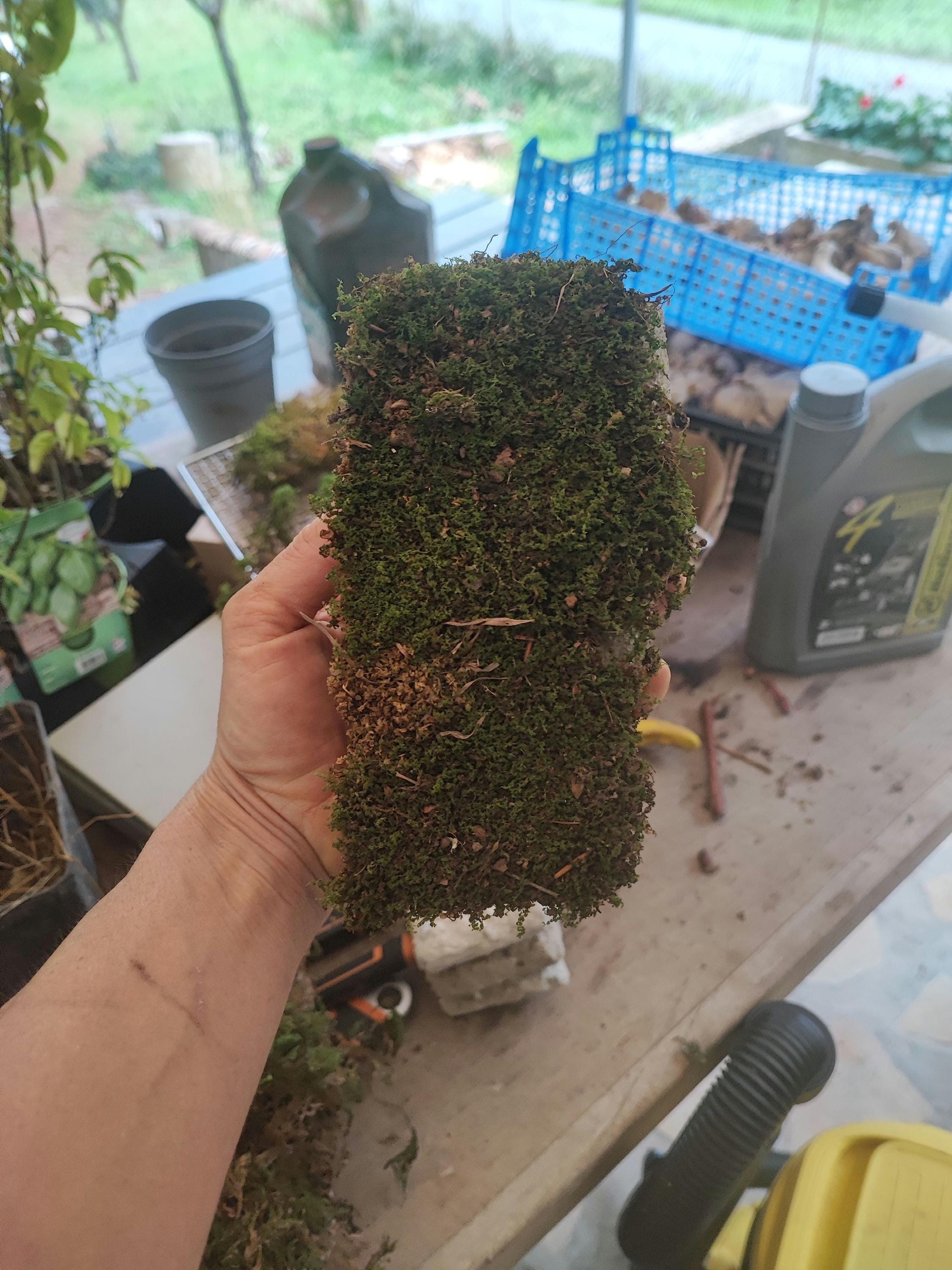

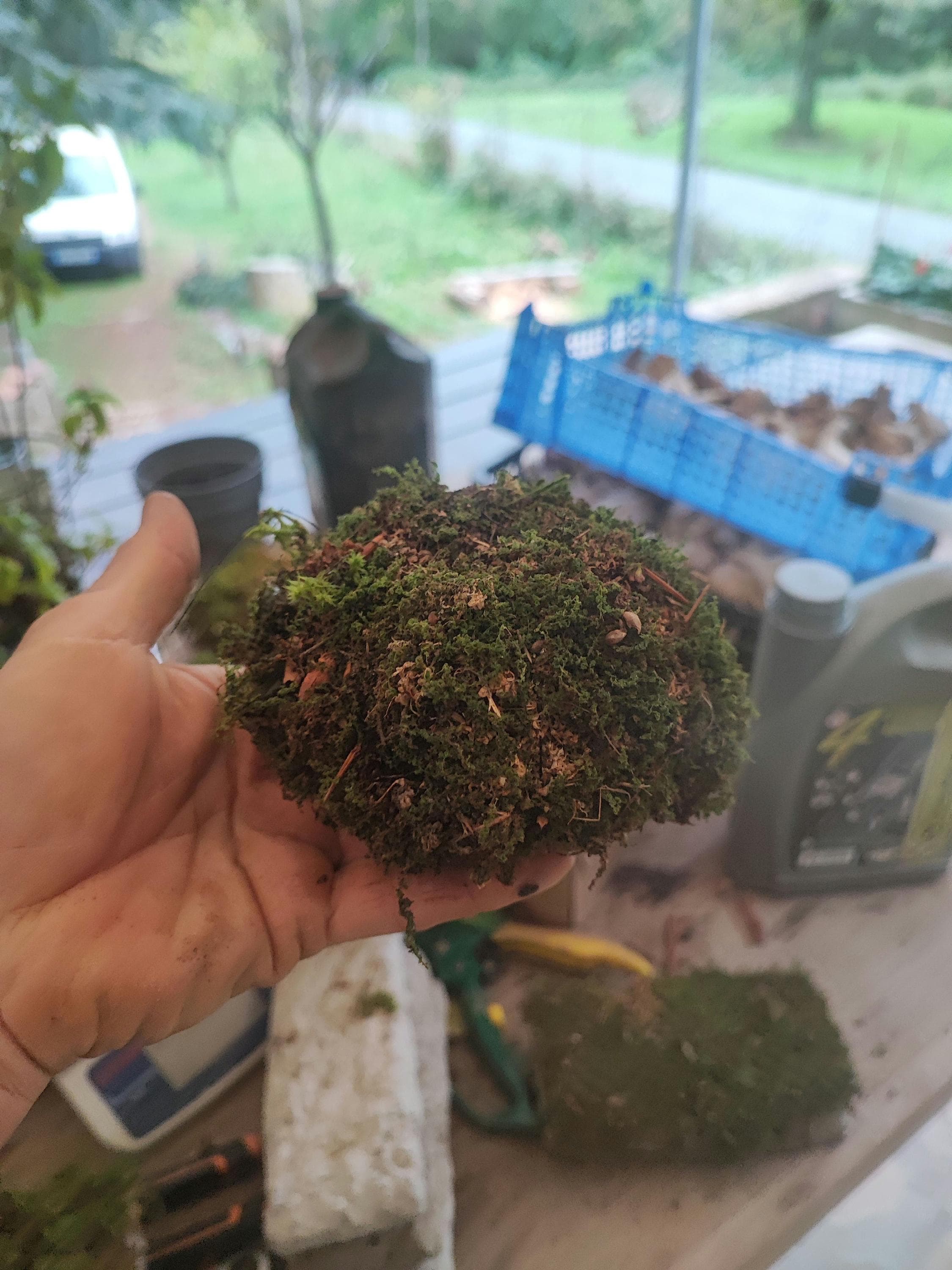
moss
Terrarium Pearl moss, Plagiomnium affine with Phytosanitary certification and Passport, grown by moss supplier
$4.75
-
DetailsPearl moss is a stunning deep shade moss that carpets out with sprawling branches creating quite a thick carpet when established, growing well on low acidic potting soil with the addition of some moist wood and leaf litter to attach to.
we sell this moss as thick carpets in many dimensions, but also as kokodema balls (our kokodema ball are unique as we use hyper tufa as the center ball, we attach the moss with our none toxic moss resin then allow the moss to attach for about 3 months.) and also as hyper tufa tiles with the moss attached, these tiles are perfect for terrariums, and walls for a DIY living wall in your home.
Making a bioactive terrarium? We also sell clean-up crews of arthropods (springtails), crustaceans (isopods), and Oniscomorpha (Pill millipedes). These unique living organisms will help establish a healthy relationship between the soil, plant roots and biodegradables inside the enclosure to thrive. If you interested in learning more please message/contact us or go to moss-wholesale.com
Free international tracked shipping from 100 euros of items bought with coupon FREESHIPPING100
If you are experiencing any problems during payment please contact me and we can sort it out, or we have another site through which you can purchase these and more!
This moss sends out long leafy branches in all directions up walls rocks earth and wood substrate. Once she has attached and set root she will grow quite quickly. Looking very moist environment near a water feature or pond side. Great as a interior or exterior moss. Plagiomnium affine, the many-fruited thyme-moss, or pearl moss is a species of thyme-moss found in old-growth boreal forests in North America, Europe, and Asia, growing in humid, moist, but not wet, basic to slightly acidic micro-habitats in woodland and in turf.
Forming a thick carpet of long intertwined, stems are usually 3 to 10 cm long, with densely packed translucent leaves that look like little samphire gems when moist, though 10 cm long trailing infertile stems have only sparse leaves, smaller than those on fertile stems. Leaves strongly curled when dry, spreading plane when moist, the basal leaves broadly elliptic to rounded, those at the apex mucronate. Leaf edges of bases decurrent on stem, the upper leaves oblong to lingulate and constricted at base, toothed. The leaf cells are arranged in diagonal rows and are easily discerned with a lens.
check out his video about how we grow this moss on our farm: https://youtu.be/8xYJBjrLKN4
You will be receiving moss which has been dehydrated for shipping, when she arrives just rehydrate her by spraying water on her, and within seconds she comes back to life.
Do have a look at my other dry moss, lichen and liverwort species for sale and buy a selection, terrariums and Paludarium.
Historically, three taxonomic bryophyte groups have been recognized and now represent the three main divisions in this group: Marchantiophyta (liverworts), Bryophyta (mosses) and Anthocerotophyta (hornworts). The three main groups have diversified throughout their evolutionary history, making it difficult to identify the specific characters separating these three groups.
The status of bryophytes as the oldest living land plants is widely accepted.
They evolved about 500 million years ago. Like other land plants, mosses contain green chlorophyll and make their own food through photosynthesis, which involves using the energy of the sun to combine carbon dioxide and water to make sugars.
Mosses are nonvascular plants, which means that they lack a vascular system. Because nonvascular plants lack lignified water-conducting tissues, they can't become as tall as most vascular plants.
The Ecological Roles of Mosses - Mosses play essential roles in the natural world:
Mosses don't need previously developed soil to survive, because they obtain their mineral nutrients from rain or running water.
This means that mosses are sometimes the first to colonize newly exposed areas. They promote soil formation, because (as they grow) dust and humus collects among the stems. When they die, their bodies decompose and add to the developing soil.
Mosses grow where other plants cannot, because they can survive without being rooted in soil. They can survive on cliffs, rocks, steep hills, and tree trunks. Mosses colonize the barren rocks and exposed areas of hills, and make them suitable for growing larger vascular plants by depositing humus soil and plant debris. Mosses can remain alive even during periods of drought, resuming photosynthesis when moistened again by rain or even fog.
Mosses play an important role in the global carbon cycle. They absorb carbon dioxide and release oxygen. In areas with cool climates, decomposition is slow because of cold temperatures. This means that large amounts of carbon are sequestered in the Sphagnum of bogs.
Mosses also contribute to the environment by absorbing water from rainfall and runoff, then slowly releasing it to the ground or atmosphere. This reduces stream erosion and fluctuating lake levels.
Mosses also provide habitat on which many species ultimately depend, underpinning entire ecosystems. Mosses provide shelter for other organisms such as small insects. The insects, in turn, provide food for frogs, which in turn provide food for snakes, which in turn provide food for carnivores like bobcats. -
Shipping & Policies
Shipping from France
Processing time
1-3 business days
Customs and import taxes
Buyers are responsible for any customs and import taxes that may apply. I'm not responsible for delays due to customs.
Payment Options
Returns & Exchanges
I gladly accept returns, exchanges, and cancellations
Just contact me within: 14 days of delivery
Ship items back to me within: 30 days of delivery
- Custom or personalized orders
- Perishable products (like food or flowers)
- Digital downloads
- Intimate items (for health/hygiene reasons)
- Items on sale
Conditions of return
Buyers are responsible for return shipping costs. If the item is not returned in its original condition, the buyer is responsible for any loss in value.
Questions about your order?
Please contact me if you have any problems with your order.

